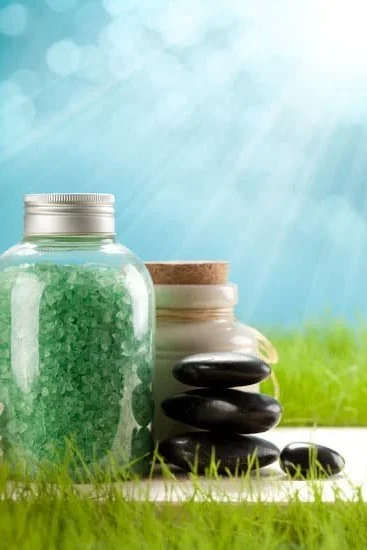Peppermint oil has long been valued for its various therapeutic properties and invigorating aroma. In the world of aromatherapy, peppermint oil is cherished for its ability to promote relaxation and provide a sense of calmness. Derived from the leaves of the peppermint plant, this essential oil has been used for centuries in traditional medicine and is now widely recognized for its numerous benefits in enhancing overall well-being.
In this article, we will explore the basics of peppermint oil and its role in aromatherapy. We will delve into its rich history, uncovering its origins and traditional uses. Additionally, we will examine the therapeutic properties of peppermint oil, particularly its menthol content and how it affects the body.
Furthermore, we will delve into the benefits that peppermint oil offers in aromatherapy. From soothing and relaxing effects on the mind and body to its potential for alleviating stress, anxiety, and depression, we will explore how this essential oil can enhance mental health. Additionally, we will discuss how it may relieve headaches, muscle pain, and digestive issues, thus promoting physical health.
As we journey through this article together, we will also learn about various methods of using peppermint oil in aromatherapy. Whether it be diffusion, inhalation or topical application, each method offers unique advantages in reaping the benefits of this versatile oil. However, it is crucial to understand precautions and safety guidelines when working with peppermint oil as it can be potent if not properly diluted or used correctly.
Next time you find yourself seeking relaxation or relief from everyday ailments, consider harnessing the power of peppermint oil through aromatherapy. Discovering nature’s ability to promote well-being can be transformative both mentally and physically. So let’s dive into the world of peppermint oil in aromatherapy – an experience that promises delightful scents as well as countless holistic benefits for a healthier lifestyle.
The History of Peppermint in Aromatherapy
Peppermint oil has a long history in the practice of aromatherapy, and its origins can be traced back to ancient civilizations. The use of peppermint for therapeutic purposes can be dated as far back as ancient Egypt, where it was used in various forms for medicinal and spiritual purposes. In fact, dried peppermint leaves have been found in the pyramids of Egypt, indicating its importance during that time.
The ancient Greeks and Romans also recognized the value of peppermint for its health benefits. Greek philosopher and botanist Dioscorides wrote about its uses in his book “De Materia Medica,” which became one of the most influential herbal texts throughout history. Peppermint was often used to alleviate digestive issues and promote overall wellness.
During the Renaissance period, peppermint continued to be popular for its medicinal properties. It was commonly used as a natural remedy for indigestion, headaches, and respiratory conditions. Peppermint also gained prominence during this time for its refreshing scent, which was believed to uplift the spirit and enhance mood.
In traditional Chinese medicine, peppermint is known as Bo He and has been used for centuries to clear heat from the body and improve digestion. It is also considered a Qi tonifying herb that promotes energy flow within the body.
Overall, the history of peppermint in aromatherapy highlights its longstanding use and recognition for its therapeutic benefits. Its origins can be traced back through several ancient civilizations, with each culture utilizing it in different ways to support physical and mental well-being. Today, peppermint continues to be widely utilized in aromatherapy practices all over the world.
| Ancient Civilizations | Uses |
|---|---|
| Ancient Egypt | Used for medicinal and spiritual purposes |
| Ancient Greece and Rome | Alleviated digestive issues Promoted overall wellness |
| Renaissance Period | Used as a natural remedy for indigestion, headaches, and respiratory conditions Enhanced mood and uplifted spirit through its refreshing scent |
| Traditional Chinese Medicine | Cleared heat from the bodyImproved digestionPromoted energy flow within the body |
Peppermint Oil and its Therapeutic Properties
Peppermint oil is widely used in aromatherapy due to its therapeutic properties. The main component of peppermint oil that contributes to its therapeutic effects is menthol. Understanding the menthol content and its effects on the body can help individuals make informed choices when using peppermint oil in aromatherapy.
Understanding Menthol Content
Menthol is a compound found naturally in the leaves of the peppermint plant. It possesses a cool, minty aroma and produces a tingling sensation when applied to the skin or inhaled. The menthol content of peppermint oil can vary depending on factors such as plant variety, growing conditions, and extraction methods.
When purchasing peppermint oil for aromatherapy, it is important to check the label for the menthol content. Higher percentages of menthol typically indicate a stronger and more potent oil. However, it is crucial to note that higher concentrations may also increase the risk of skin irritation or other side effects. Beginners or individuals with sensitive skin may prefer oils with lower menthol content.
Effects on the Body
Peppermint oil’s high menthol content gives it several therapeutic properties that are beneficial for both physical and mental well-being. When applied topically or administered through inhalation, peppermint oil has a cooling and refreshing effect on the body.
One major benefit of menthol is its ability to relieve pain and reduce inflammation. When applied topically, it can provide relief from headaches, muscle soreness, and joint pain. The cooling sensation produced by menthol can help numb pain receptors and promote relaxation.
In addition to its analgesic properties, peppermint oil with high menthol content has been found to have antimicrobial and antispasmodic effects. Its antimicrobial properties make it useful for treating respiratory infections or promoting good oral health. Its antispasmodic effects can help relieve digestive issues such as bloating, stomach cramps, and nausea.
Understanding the therapeutic properties of peppermint oil, particularly its menthol content and effects on the body, can help individuals harness the benefits of this essential oil in their aromatherapy practices. Whether it is for pain relief, respiratory support, or digestive health, peppermint oil can be a valuable addition to one’s holistic wellness routine.
The Benefits of Peppermint Oil in Aromatherapy
Peppermint oil, derived from the leaves of the peppermint plant, has long been recognized for its therapeutic properties and has become a popular ingredient in aromatherapy. The benefits of peppermint oil in aromatherapy are vast, as it can have soothing and relaxing effects on both the mind and body.
One of the main reasons why peppermint oil is prized in aromatherapy is due to its ability to promote mental clarity and focus. The refreshing scent of peppermint can help stimulate the mind, increase alertness, and improve concentration. This makes it particularly beneficial for those who need an extra boost of energy or struggle with mental fatigue.
In addition to its stimulating properties, peppermint oil is also known for its ability to induce a sense of relaxation. Its cooling sensation and soothing aroma can help calm nerves, reduce stress, and alleviate anxiety symptoms. Aromatherapy with peppermint oil has even been shown to be effective in promoting better sleep quality by creating a peaceful environment conducive to rest and relaxation.
| Benefit | Description |
|---|---|
| Mental Clarity | Stimulates the mind, improves concentration, and increases alertness. |
| Relaxation | Calms nerves, reduces stress, alleviates anxiety symptoms, and promotes better sleep quality. |
Overall, incorporating peppermint oil into your aromatherapy routine can provide numerous psychological benefits that contribute to overall well-being. Whether you need a mental pick-me-up or want to unwind after a long day, this versatile essential oil may be just what you’re looking for to achieve a harmonious state of both mind and body.
Mental Health and Peppermint Oil
Peppermint oil is not only beneficial for physical health but also has a positive impact on mental health. This section will focus on how aromatherapy with peppermint oil can help alleviate stress, anxiety, and depression.
Stress, anxiety, and depression are common mental health concerns that many individuals face today. Aromatherapy using peppermint oil can be an effective natural remedy to help manage these conditions. The scent of peppermint has been found to have a calming effect on the mind and body, promoting relaxation and reducing feelings of stress and anxiety.
One way to experience the benefits of peppermint oil for mental health is through inhalation. Using a diffuser or adding a few drops of peppermint oil to a bowl of hot water and inhaling the steam can provide instant relief from stress and anxiety. The aroma of peppermint stimulates the olfactory system, triggering the release of endorphins in the brain, which are known as “feel-good” chemicals.
Another method is topical application. Diluting a few drops of peppermint oil in a carrier oil such as coconut or almond oil and massaging it onto the temples, neck, or wrists can help promote relaxation and ease symptoms of depression. The cooling sensation of menthol in the oil provides a refreshing effect on the skin, further enhancing its therapeutic properties.
Overall, aromatherapy with peppermint oil offers a natural and holistic approach to improving mental well-being. Its ability to alleviate stress, anxiety, and depression makes it an excellent choice for those seeking relief without relying on pharmaceutical interventions. It is important to remember that while aromatherapy can be beneficial for mental health conditions, it should not substitute professional medical advice or treatment.
Physical Health and Peppermint Oil
Peppermint oil is not only known for its refreshing scent and cooling sensation, but it also has properties that can provide relief for various physical ailments. In this section, we will explore how peppermint oil can effectively alleviate headaches, muscle pain, and digestive issues.
Relief from Headaches
One of the most common uses of peppermint oil in aromatherapy is to relieve headaches. Peppermint oil has analgesic and vasoconstrictor properties that can help reduce the intensity and duration of headaches. When applied topically or inhaled through diffusion, peppermint oil stimulates blood circulation and has a cooling effect on the skin. This can alleviate tension headaches and migraines by relaxing muscle contractions and reducing inflammation in the head and neck area.
Soothing Muscle Pain
Peppermint oil contains natural compounds such as menthol that have a numbing effect on the nerves, making it an excellent choice for relieving muscle pain. Menthol acts as a natural muscle relaxant, reducing soreness, stiffness, and inflammation. Aromatherapy with peppermint oil can be beneficial for those experiencing muscle tension or pain due to exercise, injury, or conditions like fibromyalgia. Massaging diluted peppermint oil into the affected muscles or using it in a warm bath can provide soothing relief.
Improving Digestive Issues
Another notable benefit of peppermint oil in aromatherapy is its ability to ease digestive problems. Peppermint has antispasmodic properties that help relax gastrointestinal muscles, relieving symptoms such as bloating, indigestion, cramps, and nausea.
Inhaling or applying diluted peppermint oil on the abdomen can help promote digestion by stimulating bile flow and reducing gut spasms. However, it is important to note that individuals with gastroesophageal reflux disease (GERD) or gallbladder issues should use peppermint oil cautiously and consult with a healthcare professional.
Ways to Use Peppermint Oil in Aromatherapy
Peppermint oil is a versatile essential oil that can be used in a variety of ways for aromatherapy purposes. Here, we will explore different methods of using peppermint oil to enjoy its therapeutic benefits.
Diffusion
One of the most popular ways to use peppermint oil in aromatherapy is through diffusion. This method involves dispersing the oil into the air using a diffuser device or by simply adding a few drops to a bowl of hot water. The diffused peppermint oil fills the room with its refreshing scent, creating a calming and invigorating atmosphere. This method is particularly effective for improving focus and enhancing mental clarity.
Inhalation
Inhalation is another effective way to use peppermint oil for aromatherapy. You can add a few drops of peppermint oil to a cotton ball or tissue and hold it near your nose, taking deep breaths to inhale the aroma. This method allows the beneficial compounds in peppermint oil, such as menthol, to enter your respiratory system and provide soothing relief for congestion, allergies, and respiratory issues.
Topical Application
Peppermint oil can also be applied topically for aromatherapy purposes. However, it is crucial to dilute the oil with a carrier oil like coconut or jojoba before applying it directly to the skin. The diluted mixture can be massaged onto temples or other areas of tension for relieving headaches or muscle pain. Additionally, mixing a few drops of peppermint oil with unscented lotion or cream can create an invigorating body moisturizer.
Remember that when using peppermint oil topically or for inhalation, it’s best to start with lower concentrations and gradually increase as needed while monitoring any potential skin reactions or sensitivities.
Precautions and Safety Guidelines
Peppermint oil is a versatile and popular essential oil used in aromatherapy for its numerous benefits. However, it is important to use peppermint oil with caution and adhere to proper dilution ratios, as well as being aware of potential side effects and contraindications.
When using peppermint oil in aromatherapy, it is crucial to dilute it properly before application. Pure peppermint oil is highly concentrated and can be irritating to the skin when used undiluted. It is recommended to mix a few drops of peppermint oil with a carrier oil such as jojoba oil or coconut oil before applying it topically. The recommended dilution ratio is typically 2-3% for adults, but this may vary depending on the individual’s sensitivity.
While peppermint oil is generally considered safe, there are some potential side effects that should be taken into consideration. Peppermint oil can cause skin irritation or allergic reactions in some individuals, especially those with sensitive skin. It is advisable to perform a patch test before using peppermint oil topically by applying a small amount diluted oil to the inner forearm and waiting 24 hours to check for any adverse reactions.
In addition, peppermint oil should be used with caution during pregnancy or while breastfeeding. Some sources suggest that high doses of peppermint oil could potentially cause uterine relaxation and should therefore be avoided during pregnancy. It is always best to consult with a healthcare professional before using any essential oils during pregnancy or while breastfeeding.
Lastly, it is important to note that peppermint oil may interact with certain medications or medical conditions. Individuals with gastroesophageal reflux disease (GERD) or hiatal hernia should avoid ingesting large amounts of peppermint oil, as it may exacerbate symptoms.
Peppermint oil may also interact with certain medications such as antacids, blood pressure medications, or anticoagulants. If you have any pre-existing medical conditions or are currently taking medication, it is advisable to consult with a healthcare professional before using peppermint oil.
By understanding and adhering to these precautionary measures and safety guidelines, individuals can safely enjoy the benefits of peppermint oil in aromatherapy without any potential risks or adverse effects.
Tips for Buying and Storing Peppermint Oil
When it comes to buying and storing peppermint oil for aromatherapy, there are some important considerations to keep in mind. It is crucial to choose high-quality oils that are pure and authentic in order to ensure optimal benefits. Here are some tips for buying and storing peppermint oil:
- Look for reputable brands and suppliers: Do your research and choose a trusted brand or supplier when purchasing peppermint oil. Look for companies that provide information about their sourcing, production methods, and quality control measures. This can help you find oils that are pure and free from synthetic additives or contaminants.
- Check the labeling: Read the labels carefully before buying peppermint oil. Look for terms like “100% pure,” “therapeutic grade,” or “organic” to indicate a higher quality product. Avoid oils that contain fillers, carrier oils, or artificial fragrances.
- Consider the extraction method: Peppermint oil can be extracted through various methods such as steam distillation or cold-pressing. Steam-distilled oils are commonly preferred in aromatherapy due to their purity and potency. Make sure the label specifies the extraction method used.
- Pay attention to the country of origin: The country of origin can impact the quality of peppermint oil. Different regions may have varying environmental conditions that can affect the plant’s properties. Look for oils sourced from reputable regions known for growing high-quality peppermint, such as the United States, France, or Japan.
- Store properly: Proper storage is crucial to maintain the freshness and potency of peppermint oil. Store your oil in a cool, dark place away from direct sunlight or heat sources to prevent oxidation and degradation of its beneficial compounds. Keep it tightly sealed to avoid exposure to air and moisture.
By following these tips, you can ensure that you are purchasing high-quality peppermint oil for use in aromatherapy practices. Remember that using fresh, authentic oils stored properly will provide you with the full therapeutic benefits of peppermint oil for your overall well-being.
Conclusion
In conclusion, peppermint oil is a highly versatile and effective essential oil that plays a key role in aromatherapy for overall well-being. Its rich history in traditional medicine showcases its widespread use and benefits throughout the years. Peppermint oil’s therapeutic properties, particularly its high menthol content, contribute to its soothing and relaxing effects on both the mind and body.
Aromatherapy with peppermint oil has been shown to have significant positive impacts on mental health. It can alleviate symptoms of stress, anxiety, and depression, promoting a sense of calmness and relaxation. Furthermore, when used topically or through inhalation, peppermint oil has been found to provide relief from headaches, muscle pain, and digestive issues.
There are various methods to incorporate peppermint oil into aromatherapy practices, such as diffusion, inhalation, and topical application. These different approaches allow for tailored experiences that cater to individual needs and preferences. However, it is important to adhere to proper dilution ratios and safety guidelines to ensure optimal results without any potential side effects or contraindications.
When purchasing peppermint oil for aromatherapy purposes, it is crucial to select high-quality oils from reputable sources. Storing the oil correctly in a cool and dark place ensures that its potency is preserved over time. By taking these precautions and following best practices for usage, individuals can fully harness the versatility and effectiveness of peppermint oil in their aromatherapy routines.
Peppermint oil truly shines as a powerful tool for enhancing overall well-being through aromatherapy. Its wide range of benefits for both mental and physical health makes it an excellent choice for those seeking natural remedies and self-care practices. Whether used alone or in combination with other essential oils, peppermint oil remains a go-to option for promoting relaxation, relieving discomforts, and improving one’s sense of balance and harmony.
Frequently Asked Questions
What is peppermint fragrance oil good for?
Peppermint fragrance oil is known for its fresh and invigorating scent. It is commonly used in the production of various cosmetic and personal care products, such as soaps, lotions, and candles.
The strong, minty aroma of peppermint fragrance oil can help provide a cooling effect on the skin and create a refreshing sensation. Additionally, many people find the scent of peppermint to be uplifting and soothing, making it a popular choice for aromatherapy purposes.
Where should I apply peppermint essential oil?
Peppermint essential oil can be applied topically to the skin, but it is important to dilute it with a carrier oil before use. The cooling properties of peppermint make it highly effective in soothing muscle pain and tension when gently massaged onto the affected area.
Additionally, due to its antimicrobial properties, peppermint oil may also be applied to minor cuts or insect bites to help cleanse and prevent infection. However, it is crucial to perform a patch test first to check for any potential skin sensitivities or adverse reactions.
Is peppermint oil safe to diffuse?
Yes, peppermint oil is generally safe to diffuse using an essential oil diffuser or a vaporizer. When used in moderation, diffusion of peppermint oil can have several benefits. The invigorating aroma may help improve focus and mental clarity by promoting alertness and reducing fatigue.
Diffusing peppermint essential oil can also help alleviate sinus congestion and respiratory discomfort due to its natural decongestant properties. However, caution should be exercised when diffusing around children or individuals with respiratory conditions as strong concentrations or prolonged exposure may cause irritation or sensitization in some cases.

Are you looking for a natural way to improve your health and wellbeing?
If so, aromatherapy may be the answer for you.





